There is a traditional star festival that takes place on July 7th in Japan. On that day, people put up a lot of decorations made from origami paper and colorful strips on which you write your wishes, on bamboo branches. Have you heard of the “Tanabata” legend? What is this star festival about? Today I will introduce one of my favorite Japanese traditional events, “Tanabata.”
The Tanabata Legend
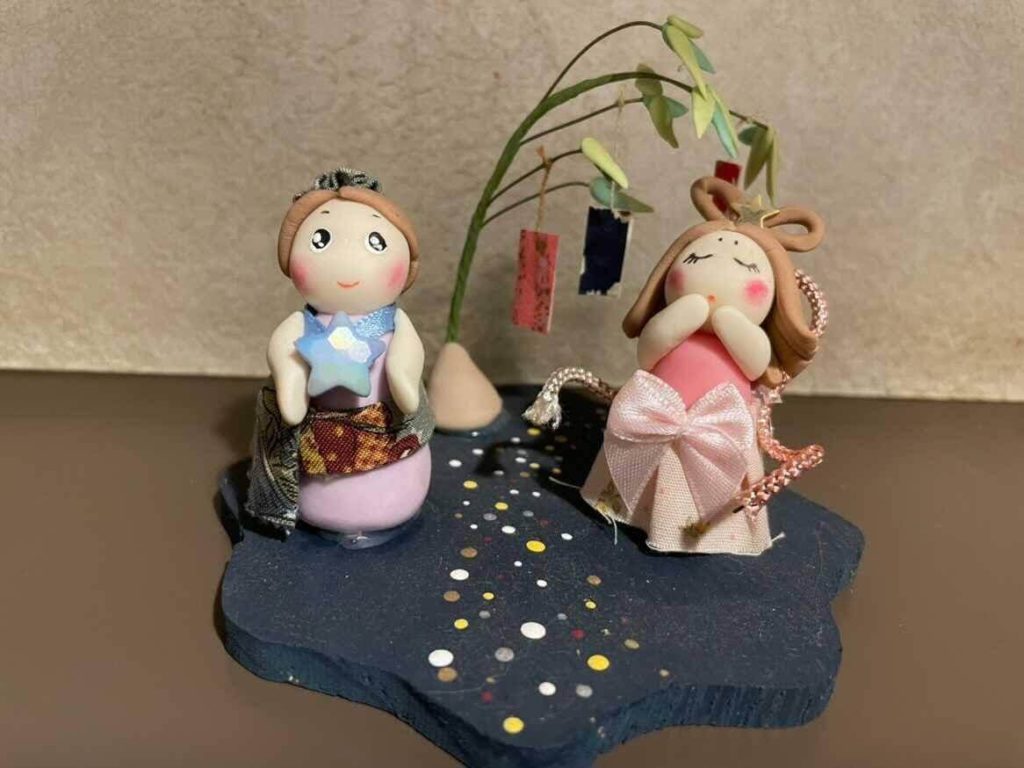
A princess who was a child of Tentei “天帝”(God of Hosts) was a weaver. Her name was Orihime “織姫.” She just worked very hard and intensely every day, so Tentei was worried about her. Tentei brought together Orihime and Hikoboshi, also a hard-working cowboy who lived on the other side of the Milky Way (天の川). They fell in love and loved each other deeply. However, after the marriage, Hikoboshi became idle with his work, and they spent more and more time together neglecting their work responsibilities. That made Tentei angry, and he separated the two by placing each on the opposite side of the Milky Way. They were so sad and cried on both sides of the Milky Way every day while looking at the other side, thinking they would never meet again. They apologized and begged Tentei to forgive their attitude and to let them see each other again. Finally Tentei agreed for them to meet once a year on July 7th. The agreement was that on only one night a year, Hikoboshi can cross the Milky Way to meet Orihime. But the Milky Way was too big for them to cross on their own, so a flock of magpies formed a bridge with their wings for the two to be able to meet.
Tanabata day
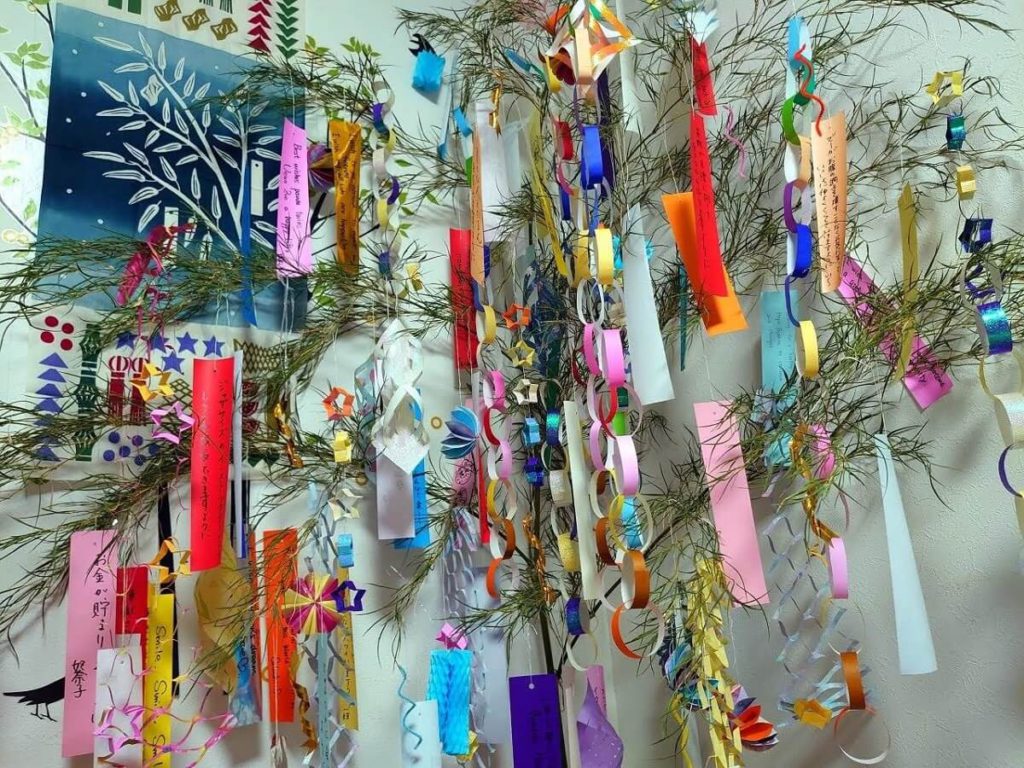
Tanabata Star Festival is held in many parts of Japan every year. In the event, people decorate bamboo branches with colorful pieces of paper to pray for Orihime and Hikoboshi to come together. They write their wishes on strips of paper, and hang them from bamboo branches, which is said to make their wishes come true.
Nowadays, this event is held all over kindergartens, elementary schools, shopping malls, stations, and public spaces as a good seasonable event. However, unfortunately, the number of families that practice this tradition at home has been decreasing, especially after their kids are grown up. I think it’s a really good time to come together with your kids and have fun chatting . I hope that the number of people who enjoy this festival day will increase again.
History
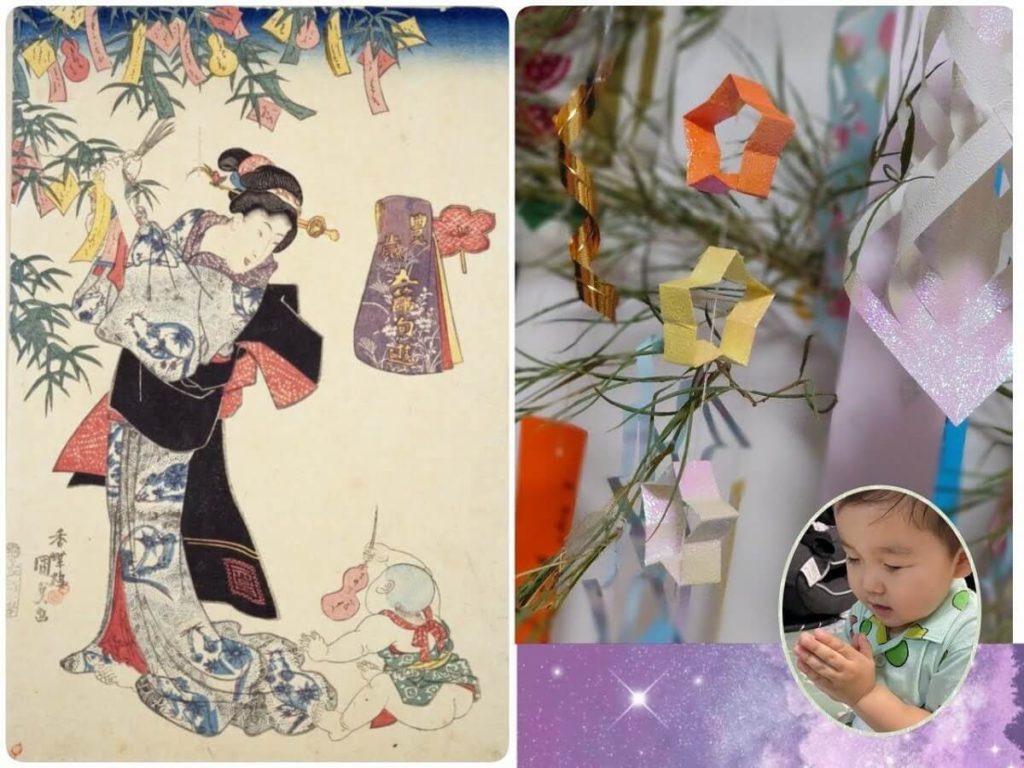
Tanabata was introduced into Japan as a palace event in the Nara era. Back then, it was very different from the current Tanabata. This tradition in which people hope to improve their handcrafts or sewing was led in connection with Orihime, who was a good weaver and a hard worker. In the Edo era, Tanabata became one of the five national festival days in Japan and it was an official shogunal holiday. It was very popular among the people. It is said that at a small private school, a temple school, called Terako-ya “寺子屋,” students wrote their wishes for improving writing and reading skill on strips.
For your information, you write “七夕” and read it “tanabata.” 七夕 reads Shichiseki and it means the evening of July 7th, and Tanabata, 棚機 is weaving which was used for the noble cloth at palace events. Tanabata festival is dedicated to Orihime, so we came to call 七夕 as Tanabata.
Tanabata day is raining every year…

Tanabata festivals take place throughout Japan. In fact, there are three different days of Tanabata – July 7th in the current solar calendar, July 7th in the lunar calendar which is sometime in mid-August and different every year, and August 7th. You would understand the first two, but why August 7th? The solar calendar was replaced with the lunar calendar in the Meiji era. Because of that, the seasonal events that were once based on the lunar calendar had a bit of a time shift from the original date during this time. To make it easier for people to adjust to the new solar calendar and to maintain those events, they decided to set each event’s date one-month later than the original date. Now, Tanabata day is July 7th in the middle of the rainy season. It means there is a high chance that it will be raining on Tanabata day. However, July 7th in the lunar calendar is around the middle or end of August in the solar calendar.
Yes, in the past, Tanabata day had a high chance of clear sky. And the 7th of every month definitely has a half moon in the lunar calendar. The moon sets almost at 10 or 11p.m. in the west. So it was a nice and good dark night when people could look at the Milky Way clearly in the middle of night. So Orihime and Hikoboshi won’t be able to meet when it’ll be rainy on Tanabata day? I don’t think so. I believe they can still meet each other above the clouds no matter how much it rains. Yet, let’s pray for Tanabata day to be fine because we will be able to feel that happy moment from the earth. Will you?
Rain Tip
- The rain that falls on July 7th is called “Sairui-U 催涙雨.” It is said to be tears shed by Orihime and Hikoboshi because they can see each other only one day a year.
- The rain that falls on July 6th is called “Sensha-U 洗車雨.” It is said to be the water he washes his oxcart with to go see her.
The Summer Triangle

The summer triangle is what you can easily find and see in the northern sky from July to August. The Summer Triangle is an asterism with lines drawn between the stars Altair, Deneb, and Vega, forming a triangle shape. These are three constellations about the Tanabata legend mentioned above.Unfortunately, if you live in the Southern Hemisphere, you can’t see it.
My bucket list ~ Tanabata~
Actually, I’ve never been to either of these two Tanabata festivals myself. Sendai Tanabata festival is the most famous Tanabata festival in Japan. It’s very far from my house and not easy to go there. I’d like to go to that festival somewhere down the line. And the Kifune shrine Tanabata event is very different from the Sendai Tanabata festival. It’s not a festival but is an event with a solemn and mysterious atmosphere. I also love that atmosphere. Visiting those events is on my bucket list.
1. Sendai Tanabata Festival
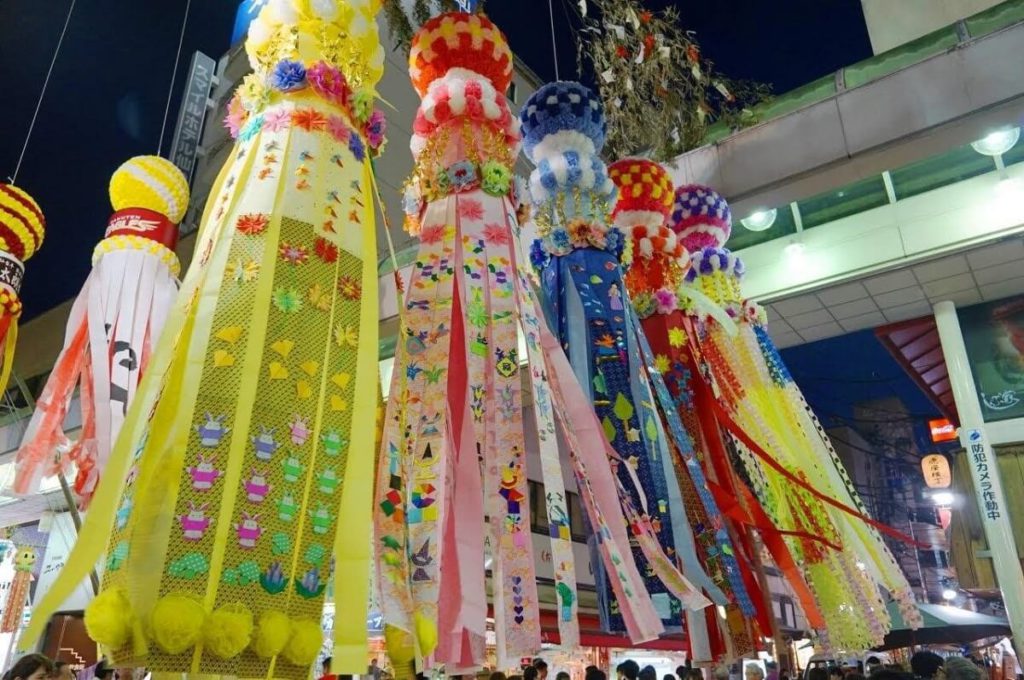
Sendai Tanabata Festival
https://www.sendaitanabata.com/en
Sendai Tanabata Festival (Omatsuri navi)
https://o-matsuri.jp/tohoku/miyagi/871.php
2. Kifune shrine Tanabata festival
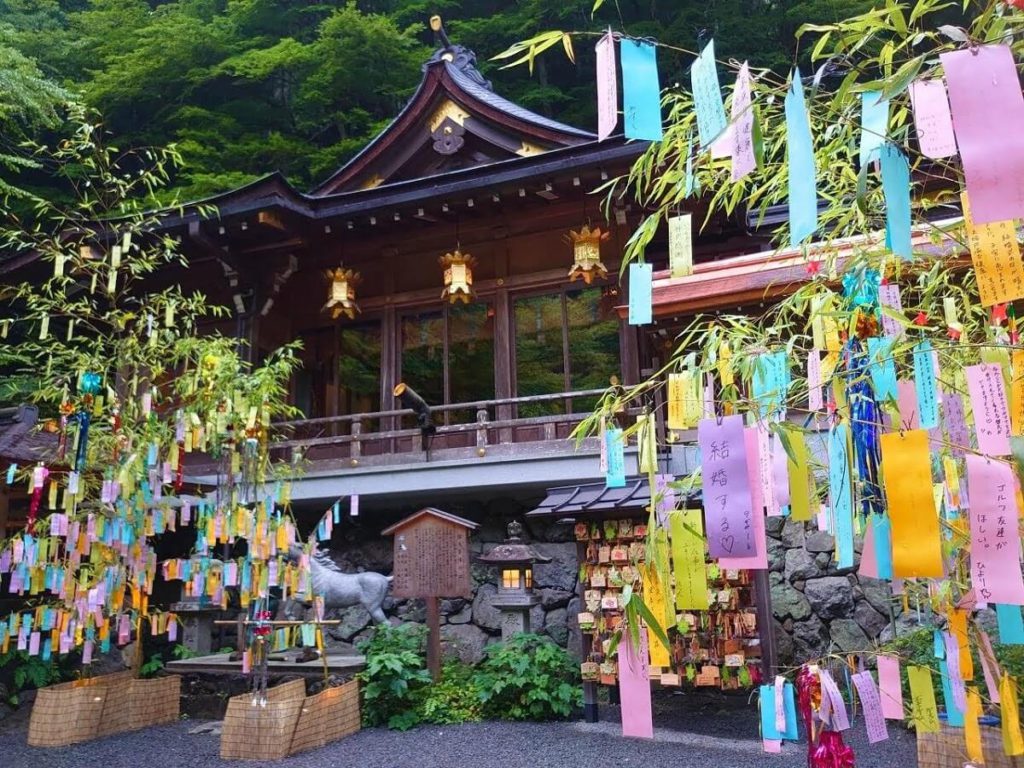
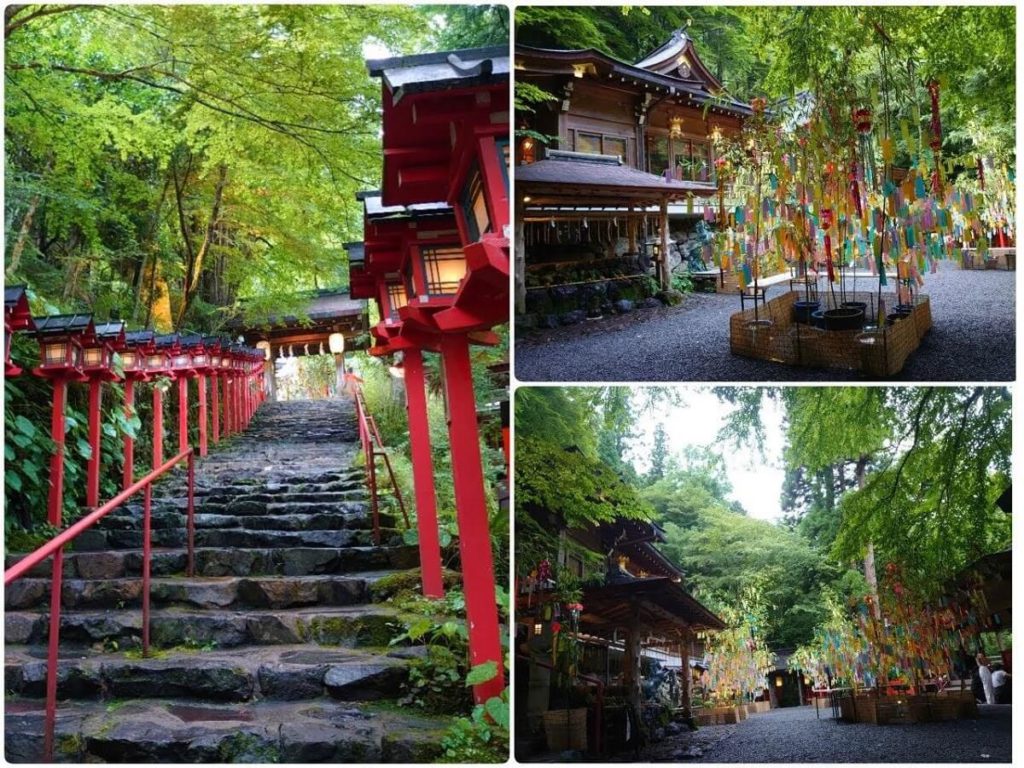
Kifune Shrine
https://kifunejinja.jp/en/

In ancient times, the Tanabata bamboo decoration was put up at home everywhere in Japan. In my childhood, my grandfather used to cut and bring bamboo branches for us, and my mother taught me how to make many kinds of decorations. Making them with my mother was a lot of fun! As a parent, I also taught my kids and made them together with them. It was also really fun!! I make bamboo decorations every single year even after my kids have grown up, with lots of fun without fail. I hope Japanese people, of course including me, will continue to cherish this event which has continued since ancient times and enjoy doing it at home more. Nowadays, I’ve been decorating the wishes for my friends, my English tutors, and of course for my family on my bamboo decoration at home. Seeing my bamboo decoration that has many wishes is really exciting and makes me happy. It’s been my pleasurable activity. Would you join me next year?
Thank you for reading.
I’m a clay artist, and a master of Japanese calligraphy “Onore-sho”. I have my own shop in Ikaruga town, Nara, which is near Horyuji temple: world heritage site. And I’m a volunteer English tour guide. I enjoy learning English everyday.




